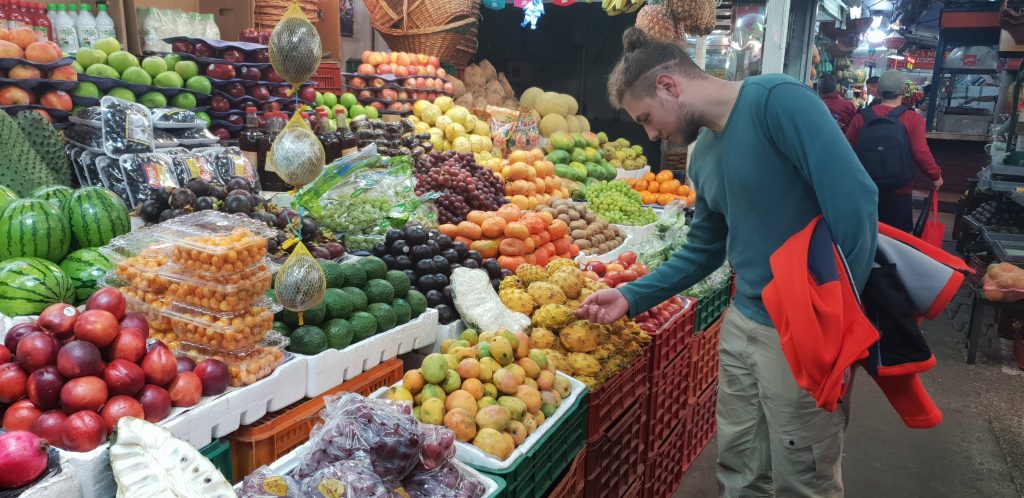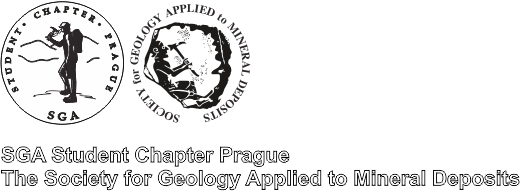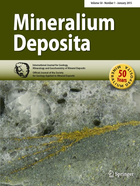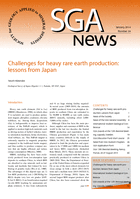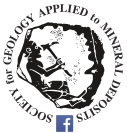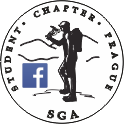Štěpán Jaroměřský, Ivan Mateo Espinel Pachón, Jan Hofmann, Milton A. Santos
1SGA Student Chapter Prague, Faculty of Science, Charles University, Albertov 6, 128 43 Prague 2, Czech Republic; jaromers@natur.cuni.cz
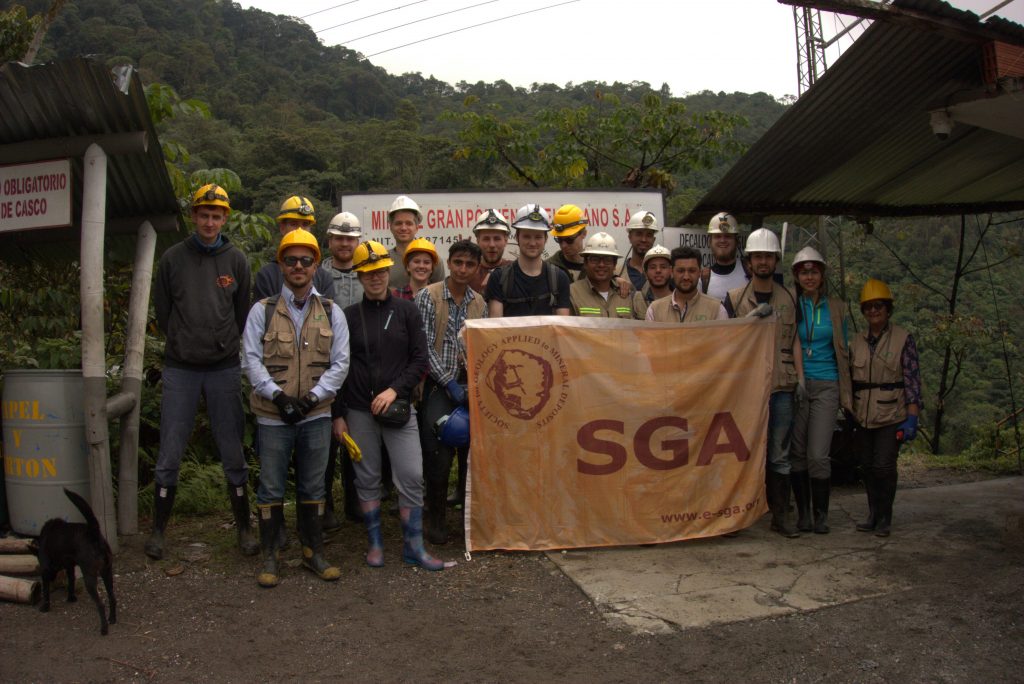
As every year, Prague Chapter participates in several fieldtrips with friendly chapters. This year, we managed to negotiate several daily fieldtrips with the SGA Student Chapter Columbia-Bogotá, which should have focused on emerald and gold deposits. The main target was to visit the world famous emerald deposit near the town of Muzo. However, the whole program was charged and very well prepared by the Colombia-Bogotá Chapter. The Prague chapter was represented by 10 members and the field trip lasted from March 19 to 25.
1st day:
On the first day we visited a sedimentary-exhaliative deposit (SedEx) near Chiquinquirá – Boyaca. Sedex are ore deposits formed by a release of ore-bearing hydrothermal fluids. Subsequently, they must be released into a water reservoir, resulting in the precipitation of stratiform ore. SedEx deposits are the most important sources of lead, zinc and barite. These ores are processed for tungsten, copper, silver, gold and bismuth.
This deposit is located high in the mountains of northern side of central Colombia. 10-year-old exploration galleries designated for researching copper in the past surround the site. There are abundantly chalky sediments, in which there are minerals of copper such as chalcopyrite. We also found some beautiful examples of barite crystals. It is a fairly extensive site, but because of the steep slope and dense fog, we stayed on the upper parts of this deposit. It was a nice introduction to Colombian geology and nature.
2nd day:
On the second day, our emerald trip started in Las Pavas area. We had accommodation in the town of Muzo, from where a very narrow path led through the local mountains. Muzo itself is well known for its emerald deposits.
Emeralds are usually found in calcite-dolomitic veins containing pyrite, ankerite, albite and quartz. These veins are the product of hydro-thermal fluids that disrupt the rock massif and the interactions of the metasomatic fluid with subsequent deposition in the breaks formed by these calcite-dolomitic veins. It is likely that metasomatic fluids come from shale formations near Muzo, which are probably the source of vanadium, which is the cause of the unique color of local emeralds.
Firstly, we headed to the Rio Magdalena where we could find some samples in the river or meander scrolls. Only one member of our chapter was lucky enough to find a small sample in the shale. We even investigated one closed mine which might be reopened in the near future.
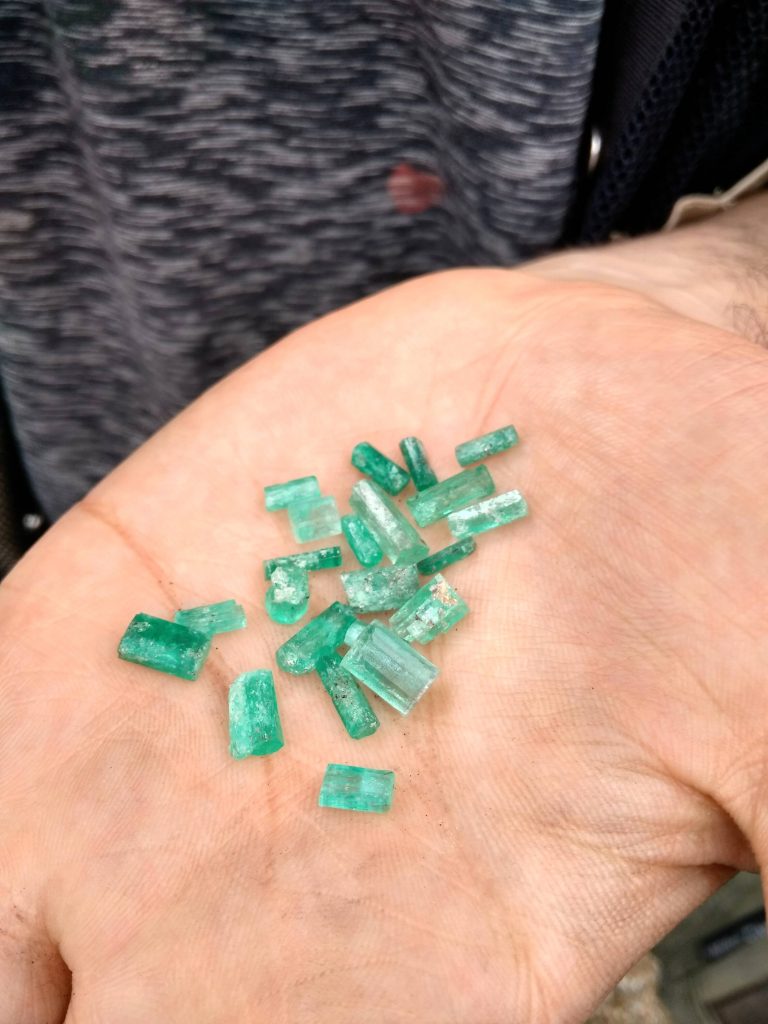
3rd day:
On the third day, we had a scheduled visit to El Líbano Tolima, the El Porvenir gold mine, orogenic and epithermal gold deposit. This mine is processing sulphide ores like pyrit, containing relatively large amounts of gold (up to 1000 ppm). The grains of gold in the bearing are mainly included in sulphides and silicates. The mineralization of gold in the bearing is probably caused by the penetration of porphyres into the Paleozoic slate on the eastern wing of Colombian Andes. It is believed that the mineralization of gold occurred in three early phases of intrusion, which are accompanied by a number of sodo-calcical changes and the late phase of penetration of porphyres. The samples contained high quartz and chalcopyrite content.
We travelled to the mine a long way on a car’s hull. Then we went through the inspection, which was waiting for us in front of mine. The whole mine is active and so we could only be there in the pause period. The whole visit was fantastic and very engaging. At the end, everyone could take only one sample of the size of a fist.

4th day:
On the fourth day, we visited the Cu-skarn Payandé deposit with garnets.
The post-Triasic plutonic rocks, known as the Payande Stock, grow on the eastern edge of Colombian central Cordillery near San Luis-Tolima. The quarry could not be reached directly by our bus, so we had to stretched our legs. At least we were accompanied by a car that eased us from our backpacks and hammers. The road was not difficult, except from the ford across the river, where we had to take off our shoes and wade.
The reason why we drove there were skarn outcrops, where the great and beautiful crystals of andradite are located. Regarding the other minerals, hematite, azurite, quartz, calcite, chlorite, magnetite and sphalerite are also found here. Petrology and mineralogy is very interesting in this deposit, as there are signs of a passage of hydrothermal fluids and changing contacts with individual minerals. We saw the beautiful mineralization of the copper. There are also several zones to see. The first zone corresponds to the tonalites, the second to endoskarns and the third to exoskarns. There is also a prograde zone containing garnets and pyroxenes. In the retrograde zone, where iron oxides, iron sulphates and copper are found. This was our last locality in terrain.
5th day:
On the fifth day we were back in Bogóta and we had a planned tour of the geological section at the Universidad Nacional de Colombia. We went through some local classrooms and looked at a few samples from the local collections. We also examined a few rocks which we saw during the fieldtrip under a microscope and finally we listened to short presentations from Prague Chapter and Bogota Chapter. After exploring the area, we went to the city to taste a bit of all possible and impossible fruits on the world-famous market Plaza de Paloquemao. Then we moved to the Gold Museum in Bogota and the largest Emerald museum in the world. Unfortunately, this day the Emerald Museum was closed in, so we had to visited another day.
Finally, we would like to thank all the leaders of this fieldtrip, especially Ivan Mateo Espinel Pachón and all the SGA Student Chapter Columbia-Bogotá members for an amazing organization and for ensuring everything needed for the success of fieldtrip. In general, I think that the cooperation between Chapters is the best form of studying. Also I would like to express great thanks to the whole SGA, as it would not be organized without their support and many thanks to all our sponsors, such as Vitana or Severočeská doly.
I think that this fieldtrip to Columbia strengthened the connection between our SGA student chapters and we hope that despite the distance between Prague and Colombia we will continue to collaborate and exchange experiences.
